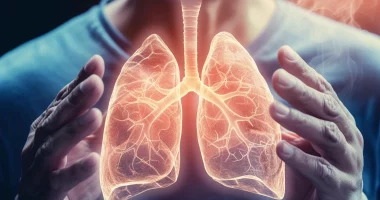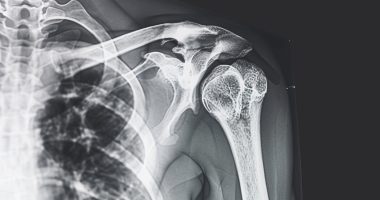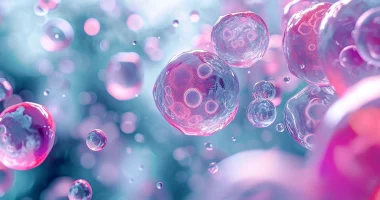Extramammary Paget disease (EMPD)
Definition
Extramammary Paget’s disease is a slowly progressive malignant neoplasm affecting the external female genital area. It is characterized by the appearance of limited, slightly convex swollen or dense areas of predominantly red color in the area of the labia majora, remaining unchanged for a long time or slowly growing and accompanied by itching. Lesions are detected during gynecological examination, the diagnosis is verified by the results of laboratory tests of biopsy specimens, and likely associated tumors are detected by instrumental methods. The primary method of treatment is surgery; radiation, chemotherapy, and hormone therapy may also be used.
General information
Extramammary Paget’s cancer of the vulva is a malignant tumor originating from the glandular cells of the epithelium of the female external genitalia. Neoplasia is most often represented by preinvasive cancer, proceeding for years and developing into invasive carcinoma in 10-20% of cases. Patients have an increased risk of extragenital carcinomas. In the structure of malignant neoplasms of the vulva, the share of Paget’s dermatosis is 2%. The disease affects predominantly postmenopausal women (the average age of patients is 65 years) and is very rarely registered before the age of 40 years.
Causes
The etiology of vulvar Paget’s cancer is not yet understood. It is assumed that malignization of the source cells of this type of carcinoma may be associated with mechanical trauma, chemical and thermal burns, local chronic inflammatory process (e.g., as a result of infection with certain types of herpes and papillomaviruses), and scarring changes of the epithelium. The role of exposure to ionizing radiation (including radiation therapy) and dyshormonal conditions resulting from obesity, ovarian, thyroid, and pancreatic dysfunction is discussed.
It has been noted that vulvar lesions with Paget’s dermatosis can be combined with other types of cancer: in 20-25% of cases with colorectal tumors, in 10-17% – with urogenital tumors, and less frequently – with hepatocellular, hepatobiliary carcinomas, ovarian and breast neoplasia. According to the assumptions of some researchers, Paget’s cancer is secondary to neoplasms and is a paraneoplastic disease (arising under the influence of biologically active substances and immune antigens synthesized by the tumor and the organism in response to the tumor). Others consider this combination to be a synchronous primary-multiple tumor process.
Classification
For extramammary Paget’s lesions, the classification according to the international TNM system generally accepted in gynecologic oncology has yet to be developed at the present stage. According to the degree of spreading, a distinction is made between preinvasive (without penetration of the basal membrane), microinvasive (with spread into the stroma to a depth of less than 1 mm), and invasive (with spread to more than 1 mm) carcinoma. According to the modern concept of the origin of Paget’s cancer, associated with the discovery and research of mammary-like glands, it is proposed to distinguish two forms that require differentiated treatment approaches:
- Primary. Paget’s disease is not associated with intraepithelial dropout from neighboring structures and develops from Toker cells.
- Secondary. Paget’s dermatosis results from dropout from epithelial carcinomas of the mammary-like glands as well as appendages of the skin, Bartolini gland, cervix, urethra, and rectum.
Symptoms
Sometimes skin manifestations may be preceded by a feeling of dryness and gradually increasing itching in the genital area; in other cases, feelings of discomfort (itching and burning) join at the stage of visible changes and become a permanent symptom, although occasionally, the pathological process is painless. Most often, the tumor occurs in the area of the labia majora as an erythematous spot or plaque. The size of the lesion can range from one millimeter to several centimeters and remain unchanged for a long time or for several months (or years), spread to neighboring structures, eventually taking over the entire vulva, as well as the perineum, anus, and in some cases – the skin of the inner surface of the thighs and lower abdomen.
To the touch, the affected areas are superficial, thickened, have an irregularly dense structure, and may be accompanied by swelling. Visually, the borders of the spot are clear and uneven. A palpable nodule under the altered epithelium indicates combined adenocarcinoma. Red, hyperemic areas of the skin over time are covered with white plaque (a specific sign of vulvar dermatosis Paget’s), swelling increases, and in some places, there is desquamation, erosions, and bloody crusts caused by scratching due to permanent itching. Damage to the crusts is accompanied by bloody-serous discharge.
Diagnosis
Due to the superficial location of neoplasia, its detection is easy. Difficulties are caused by the complexity of differential diagnosis due to the multitude of visually similar nosological forms of vulvar pathology. Tumor lesion is detected during gynecologic examination, then the following types of studies are prescribed:
- Laboratory verification. Performed to determine the histologic type and nature of the neoplasm. With the help of histological examination, the microscopic structure characteristic of Paget’s cancer is revealed, and the degree of invasion is determined. Immunohistochemical analysis confirms the diagnosis, allows the assessment of the hormone sensitivity of tumor cells, and determines their source (from which organ the secondary neoplasia originates).
- Instrumental studies. These are performed to detect concurrent carcinomas. Ultrasound of the bladder, urethroscopy, and sigmoidoscopy help to detect neoplasia of the bladder, urethra, and rectum. Ultrasound of the vulva, pelvis, abdomen, and mammary glands allows us to suspect malignant tumors of these organs and colposcopy – cervical tumor.
Treatment of Paget’s disease
Treatment is carried out by specialists in oncology; in the case of invasive and secondary forms, radiologists and chemotherapists may be involved. The treatment program depends on the local extent of the process, the combination of Paget’s disease with other malignant neoplasia, the immunohistochemical characteristics of the tumor, and the general condition of the patient. Paget’s disease is treated by the following methods:
- Surgery. It is the main method of treatment. In primary pre- and microinvasive forms, combination with other types of treatment is usually not required. Depending on the extent of the tumor process, surgery may be performed as a wide excision or vulvectomy. The likelihood of recurrence is significantly reduced by the use of microscopically controlled removal (Mohs micrographic surgery).
- Radiotherapy. Radiotherapy can be used as treatment under a radical program (e.g., in case of process spreading that does not allow radical surgery) or as an additional method – after and/or before surgery. In combination with surgery, it is prescribed in case of secondary or invasive Paget’s cancer, “positivity” of the resection margin.
- Cytostatic therapy. Chemotherapy is adjunctive and may be administered before or after surgery for invasive, extensive, or secondary lesions. Pyrimidines and platinum derivatives are used.
- Hormone therapy is an additional method used to prevent recurrences. Hormone antagonists are prescribed in combination with surgical and radiation treatment in cases of immunohistochemically proven hormonal sensitivity of tumor cells.
All these treatment options are available in more than 540 hospitals worldwide (https://doctor.global/results/diseases/extramammary-paget-disease-empd). For example, Mohs surgery can be performed in 31 clinics across Germany for an approximate price of $5,0 K (https://doctor.global/results/europe/germany/all-cities/all-specializations/procedures/mohs-surgery).
Prognosis and prevention
The prognosis for primary intraepithelial cancer is favorable (five-year survival rate is 100%); in case of invasion and/orcombination with other adenocarcinomas, it sharply worsens and depends on the spread of primary and primary-multiple processes. The lethal outcome is usually due to the generalization of the combined tumor. After surgical treatment, recurrences occur in 9% of patients with the non-invasive form of Paget’s dermatosis within eight years and in 67% with the invasive form within one and a half years. After radiation treatment (when surgery is not feasible for any reason), the rate averages up to 50% within four years.
Primary prevention includes preventing infections (including sexually transmitted infections) and correcting endocrine-exchange disorders. Secondary prophylaxis aims at early detection of tumors and their recurrences. It involves annual gynecological examinations of older women and lifelong dispensary monitoring of patients treated for extramammary Paget’s disease.


